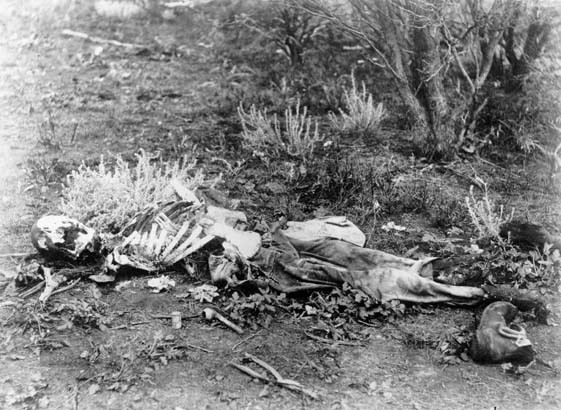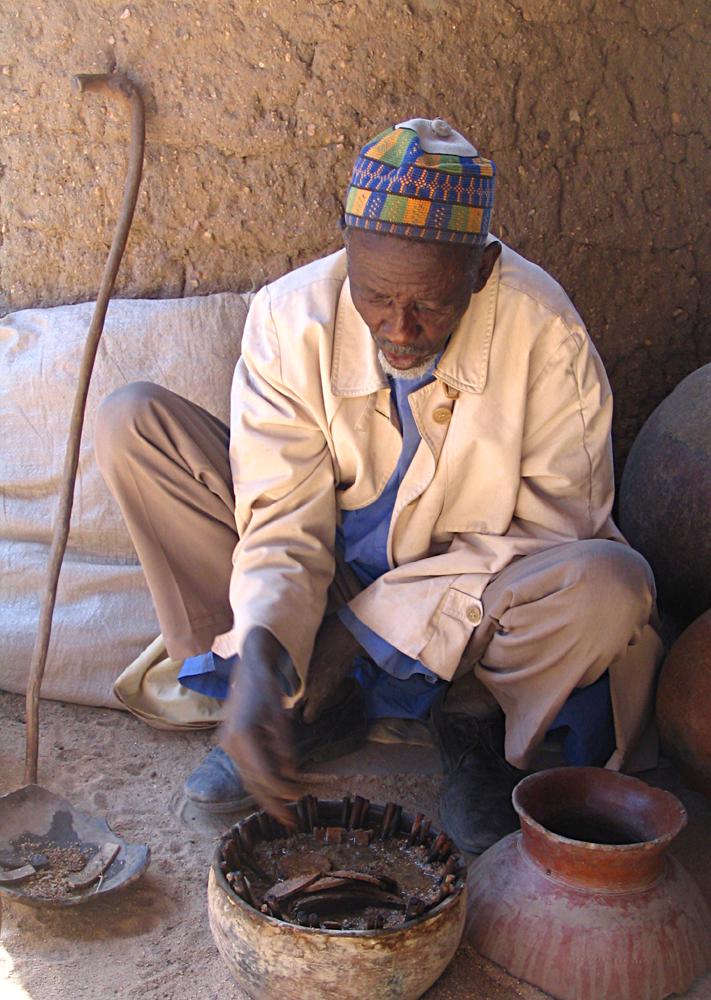|
Witch-hunt
A witch hunt, or a witch purge, is a search for people who have been labeled witches or a search for evidence of witchcraft. Practicing evil spells or Incantation, incantations was proscribed and punishable in early human civilizations in the Middle East. In medieval Europe, witch-hunts often arose in connection to charges of heresy from Christianity. An Witch trials in the early modern period, intensive period of witch-hunts occurring in Early Modern Europe and to a smaller extent European Colonization of the Americas, Colonial America, took place from about 1450 to 1750, spanning the upheavals of the Counter Reformation and the Thirty Years' War, resulting in an estimated 35,000 to 60,000 executions. The last executions of people convicted as witches in Europe took place in the 18th century. In other regions, like Africa and Asia, contemporary witch-hunts have been reported from sub-Saharan Africa and Papua New Guinea, and official legislation against witchcraft is still foun ... [...More Info...] [...Related Items...] OR: [Wikipedia] [Google] [Baidu] |
Witch Trials In The Early Modern Period
In the early modern period, from about 1400 to 1775, about 100,000 people were prosecuted for witchcraft in Europe and British America. Between 40,000 and 60,000 were executed, almost all in Europe. The witch-hunts were particularly severe in parts of the Holy Roman Empire. Prosecutions for witchcraft reached a high point from 1560 to 1630, during the Counter-Reformation and the European wars of religion. Among the lower classes, accusations of witchcraft were usually made by neighbors, and women and men made formal accusations of witchcraft. Magical healers or 'cunning folk' were sometimes prosecuted for witchcraft, but seem to have made up a minority of the accused. Roughly 80% of those convicted were women, most of them over the age of 40. In some regions, convicted witches were burnt at the stake, the traditional punishment for religious heresy. Medieval background Christian doctrine Throughout the medieval era, mainstream Christian doctrine had denied the belief in the ex ... [...More Info...] [...Related Items...] OR: [Wikipedia] [Google] [Baidu] |
Witchcraft
Witchcraft is the use of Magic (supernatural), magic by a person called a witch. Traditionally, "witchcraft" means the use of magic to inflict supernatural harm or misfortune on others, and this remains the most common and widespread meaning. According to ''Encyclopedia Britannica'', "Witchcraft thus defined exists more in the imagination", but it "has constituted for many cultures a viable explanation of evil in the world". The belief in witches has been found throughout history in a great number of societies worldwide. Most of these societies have used Apotropaic magic, protective magic or counter-magic against witchcraft, and have shunned, banished, imprisoned, physically punished or killed alleged witches. Anthropologists use the term "witchcraft" for similar beliefs about harmful occult practices in different cultures, and these societies often use the term when speaking in English. Belief in witchcraft as malevolent magic is attested from #Ancient Mesopotamian religion ... [...More Info...] [...Related Items...] OR: [Wikipedia] [Google] [Baidu] |
Moral Panic
A moral panic is a widespread feeling of fear that some evil person or thing threatens the values, interests, or well-being of a community or society. It is "the process of arousing social concern over an issue", usually perpetuated by moral entrepreneurs and mass media coverage, and exacerbated by politicians and lawmakers. Moral panic can give rise to new laws aimed at controlling the community. Stanley Cohen, who developed the term, states that moral panic happens when "a condition, episode, person or group of persons emerges to become defined as a threat to societal values and interests". While the issues identified may be real, the claims "exaggerate the seriousness, extent, typicality and/or inevitability of harm". Moral panics are now studied in sociology and criminology, media studies, and cultural studies. It is often academically considered irrational (see Cohen's model of moral panic, below). Examples of moral panic include the belief in widespread abduction of c ... [...More Info...] [...Related Items...] OR: [Wikipedia] [Google] [Baidu] |
Papua New Guinea
Papua New Guinea, officially the Independent State of Papua New Guinea, is an island country in Oceania that comprises the eastern half of the island of New Guinea and offshore islands in Melanesia, a region of the southwestern Pacific Ocean north of Australia. It has Indonesia–Papua New Guinea border, a land border with Indonesia to the west and neighbours Australia to the south and the Solomon Islands to the east. Its capital, on its southern coast, is Port Moresby. The country is the world's third largest list of island countries, island country, with an area of . The nation was split in the 1880s between German New Guinea in the North and the Territory of Papua, British Territory of Papua in the South, the latter of which was ceded to Australia in 1902. All of present-day Papua New Guinea came under Australian control following World War I, with the legally distinct Territory of New Guinea being established out of the former German colony as a League of Nations mandate. T ... [...More Info...] [...Related Items...] OR: [Wikipedia] [Google] [Baidu] |
Age Of Exploration
The Age of Discovery (), also known as the Age of Exploration, was part of the early modern period and overlapped with the Age of Sail. It was a period from approximately the 15th to the 17th century, during which Seamanship, seafarers from European countries explored, colonized, and conquered regions across the globe. The Age of Discovery was a transformative period when previously isolated parts of the world became connected to form the world-system, and laid the groundwork for globalization. The extensive overseas exploration, particularly the opening of maritime routes to the East Indies and European colonization of the Americas by the Spanish Empire, Spanish and Portuguese Empire, Portuguese, later joined by the British Empire, English, French colonial empire, French and Dutch empire, Dutch, spurred International trade, international global trade. The interconnected global economy of the 21st century has its origins in the expansion of trade networks during this era. T ... [...More Info...] [...Related Items...] OR: [Wikipedia] [Google] [Baidu] |
Mass Hysteria
Mass psychogenic illness (MPI), also called mass sociogenic illness, mass psychogenic disorder, epidemic hysteria or mass hysteria, involves the spread of illness symptoms through a population where there is no infectious agent responsible for contagion. It is the rapid spread of illness signs and symptoms affecting members of a cohesive group, originating from a nervous system disturbance involving excitation, loss, or alteration of function, whereby physical complaints that are exhibited unconsciously have no corresponding organic causes that are known. Signs and symptoms Timothy F. Jones of the Tennessee Department of Health compiled the following symptoms based on their commonality in outbreaks occurring in 1980–1990: Jones, Timothy. "Mass Psychogenic Illness: Role of the Individual Physician." ''American Family Physician.'' America ... [...More Info...] [...Related Items...] OR: [Wikipedia] [Google] [Baidu] |
Anthropological
Anthropology is the scientific study of humanity, concerned with human behavior, human biology, cultures, societies, and linguistics, in both the present and past, including archaic humans. Social anthropology studies patterns of behaviour, while cultural anthropology studies cultural meaning, including norms and values. The term sociocultural anthropology is commonly used today. Linguistic anthropology studies how language influences social life. Biological (or physical) anthropology studies the biology and evolution of humans and their close primate relatives. Archaeology, often referred to as the "anthropology of the past," explores human activity by examining physical remains. In North America and Asia, it is generally regarded as a branch of anthropology, whereas in Europe, it is considered either an independent discipline or classified under related fields like history and palaeontology. Etymology The abstract noun ''anthropology'' is first attested in reference to hist ... [...More Info...] [...Related Items...] OR: [Wikipedia] [Google] [Baidu] |
Magical Thinking
Magical thinking, or superstitious thinking, is the belief that unrelated events are causally connected despite the absence of any plausible causal link between them, particularly as a result of supernatural effects. Examples include the idea that personal thoughts can influence the external world without acting on them, or that objects must be causally connected if they resemble each other or have come into contact with each other in the past. Magical thinking is a type of fallacious thinking and is a common source of invalid causal inferences. Unlike the confusion of correlation with causation, magical thinking does not require the events to be correlated. The precise definition of magical thinking may vary subtly when used by different theorists or among different fields of study. In psychology, magical thinking is the belief that one's thoughts by themselves can bring about effects in the world or that thinking something corresponds with doing it. These beliefs can cause a ... [...More Info...] [...Related Items...] OR: [Wikipedia] [Google] [Baidu] |
Divination
Divination () is the attempt to gain insight into a question or situation by way of an occultic ritual or practice. Using various methods throughout history, diviners ascertain their interpretations of how a should proceed by reading signs, events, or omens, or through alleged contact or interaction with supernatural agencies such as ghost, spirits, gods, god-like-beings or the "will of the universe". Divination can be seen as an attempt to organize what appears to be random so that it provides insight into a problem or issue at hand. Some instruments or practices of divination include Tarot card reading, Tarot-card reading, Runic magic, rune casting, Tasseography, tea-leaf reading, automatic writing, water scrying, and psychedelics like psilocybin mushrooms and DMT. If a distinction is made between divination and fortune-telling, divination has a more formal or ritualistic element and often contains a more social character, usually in a religion, religious context, as se ... [...More Info...] [...Related Items...] OR: [Wikipedia] [Google] [Baidu] |
Magic (paranormal)
Magic, sometimes spelled magick, is the application of beliefs, rituals or actions employed in the belief that they can manipulate natural or supernatural beings and forces. It is a category into which have been placed various beliefs and practices sometimes considered separate from both religion and science. Connotations have varied from positive to negative at times throughout history. Within Western culture, magic has been linked to ideas of the Other, foreignness, and primitivism; indicating that it is "a powerful marker of cultural difference" and likewise, a non-modern phenomenon. During the late nineteenth and early twentieth centuries, Western intellectuals perceived the practice of magic to be a sign of a primitive mentality and also commonly attributed it to marginalised groups of people. Aleister Crowley (1875–1947), a British occultist, defined " magick" as "the Science and Art of causing Change to occur in conformity with Will", adding a 'k' to distinguish c ... [...More Info...] [...Related Items...] OR: [Wikipedia] [Google] [Baidu] |
Ancient Egypt
Ancient Egypt () was a cradle of civilization concentrated along the lower reaches of the Nile River in Northeast Africa. It emerged from prehistoric Egypt around 3150BC (according to conventional Egyptian chronology), when Upper and Lower Egypt were amalgamated by Menes, who is believed by the majority of List of Egyptologists, Egyptologists to have been the same person as Narmer. The history of ancient Egypt unfolded as a series of stable kingdoms interspersed by the "Periodization of ancient Egypt, Intermediate Periods" of relative instability. These stable kingdoms existed in one of three periods: the Old Kingdom of Egypt, Old Kingdom of the Early Bronze Age; the Middle Kingdom of Egypt, Middle Kingdom of the Middle Bronze Age; or the New Kingdom of Egypt, New Kingdom of the Late Bronze Age. The pinnacle of ancient Egyptian power was achieved during the New Kingdom, which extended its rule to much of Nubia and a considerable portion of the Levant. After this period, Egypt ... [...More Info...] [...Related Items...] OR: [Wikipedia] [Google] [Baidu] |





